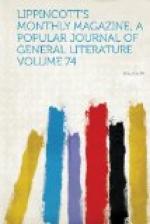These beautiful stalls, one hundred and two in number, are now placed for safe-keeping in what was the infirmary of the adjoining college. Possibly, when the work going on pian piano in the church is completed, they may be restored to their original place. Their sombre richness would show well in that radiant atmosphere.
The work in the church is, however, well done, and was greatly needed, for those precious frescoes were gradually going to decay. No touch of pencil is allowed: the work is one of preservation merely, and is being conducted with the greatest care. The loosened intonaco is found by tapping lightly on the wall: plaster is then slipped underneath and the painting firmly pressed to its place. At first gesso was used, but it was found not to answer the purpose. Every smallest fragment of painting is saved, and the blank spaces are filled in with plaster which is painted a light gray. This freshens and throws out the adjoining colors.
It is customary to call the lower church “devotional.” With many, a dark church is always devotional. I should rather call it sympathetic. Every sort of mood may here find itself reflected, and the sinner be as much at home as the saint. Anger and hate may hide as well as devotion: the artist may dream, the weary may rest, the stupid doze. The only objects which ever seemed to me utterly incongruous there were a brisk company of hurried tourists, red-covered guidebook in hand, clattering with sharp-sounding boot-heels up the dim nave and talking with sharp, loud voices at the very steps of the altar where people were kneeling at the most solemn moment of the mass. But even these invariably soften their tones and their movements after a while.
This church has always some pleasant surprise for the frequent visitor. The morning light shows one picture, the evening light another: the sunrise adorns this window, the sunset that. There is no hour from dawn to dark in which some gem of ancient painting does not look its best, while little noticed, if seen at all, at other hours. Some are seen by a reflected light; others, when the church is so dark that one may stumble against a person in the nave, gather to themselves the dim and scattered rays like an aureole, from which they look out with soft distinctness; and there are others, again, upon which a sun-ray, finding a narrow passage through arch after arch, alights with a sudden momentary glory that is almost startling.
It is a fascinating place, that middle church—never light, but always traversed by some varying illumination which is ever lost in shadows. And in those shadows how much may lurk of present material beauty and of beautiful memory! Here, before the chapel of St. Louis, Raphael lingered, learning the frescoed Sibyls of its vault so by heart that he almost reproduced them afterward in the Pace at Rome—that dear Raphael who did not fear being called a plagiarist, his soul was so full of beauty, and he so transfigured whatever he touched with that suave pencil of his that seemed to have been clipped in light for a color. And where did the feet of Michael Angelo rest when he stood in the transept and praised that Crucifixion painted on the wall? One might expect that the stones would have been conscious of the Orpheus they supported.




